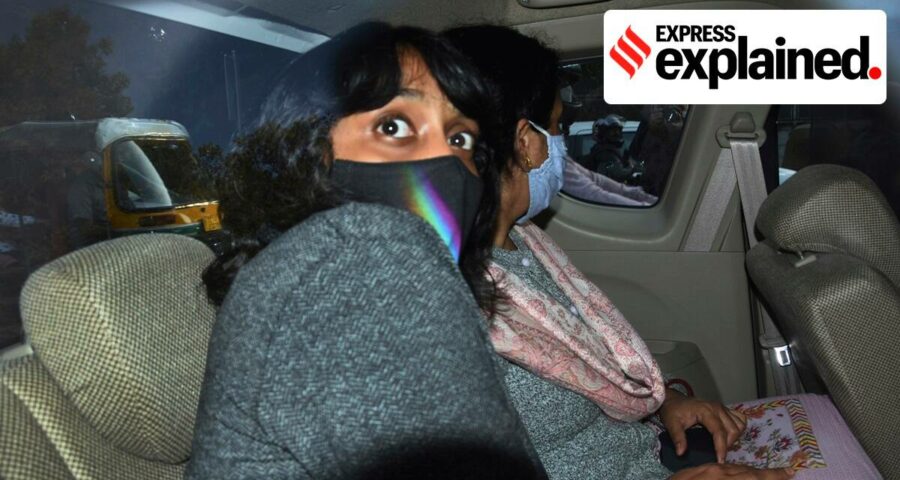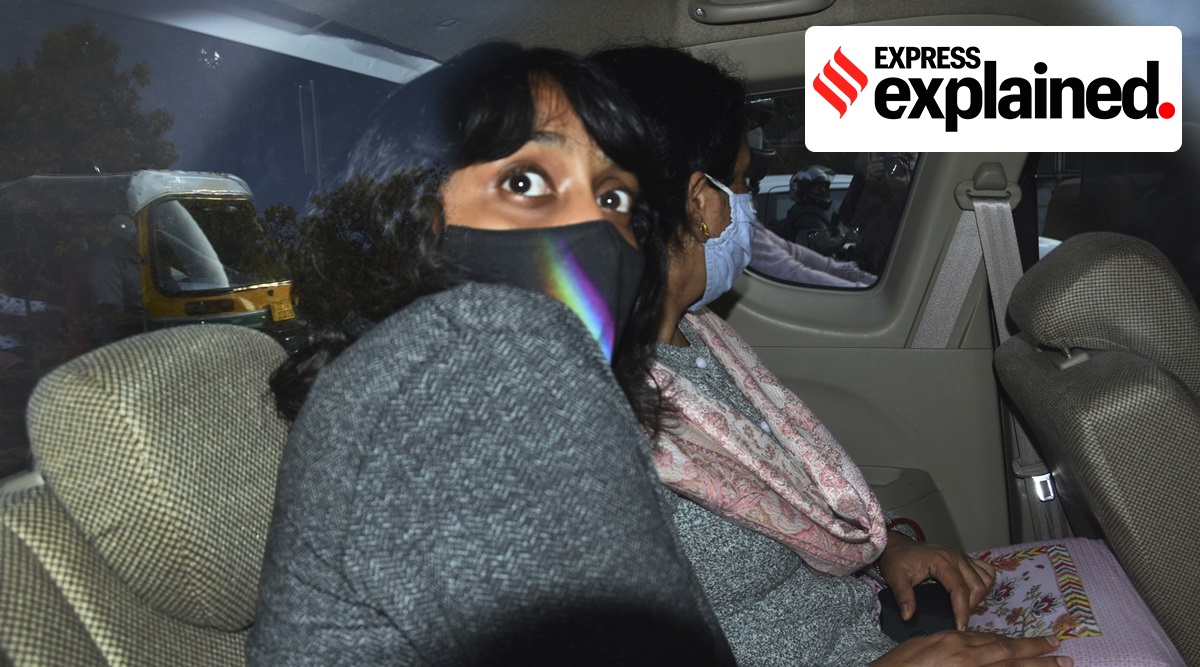Disha Ravi case: What are Sections 120A and 120B of the IPC, dealing with the offence of criminal conspiracy? When can a person be accused of conspiracy, and how is a conspiracy proven and punished?
In granting bail to 22-year-old climate change activist Disha Ravi on Tuesday, the trial court in Delhi rejected the Delhi Police charge that she was part of a “larger conspiracy” to incite violence in the national capital on January 26.
What was the conspiracy charge made by Delhi Police?
Police have claimed that Disha, along with Mumbai-based advocate Nikita Jacob and Beed, Maharashtra-based engineer Shantanu Muluk, were “local collaborators of the conspiracy to incite disaffection and precipitate violence” on Republic Day, and that “they all used social media to peddle support for secessionist Khalistan narrative in the guise of farmer protests”.
It was noted that Disha had rights as an editor of the protest “Toolkit”, and that she had in December last year, created a WhatsApp group by the name of “Intl Farmers Strike” using her mobile phone number.
The police alleged that there was a link between the creation of the toolkit and two Canada-based groups, Poetic Justice Foundation and Kisaan Ekta Co. The police claimed that these groups are secessionist organisations advocating the creation of an independent and separate state of Punjab by the name of Khalistan.
What is the law on conspiracy?
Section 120A of the Indian Penal Code (IPC) defines criminal conspiracy; Section 120B prescribes the punishment for it.
An “agreement” between two or more persons to commit a criminal offence constitutes the offence of criminal conspiracy.
Only an agreement is necessary and sufficient to establish the charge of conspiracy, even if the actual criminal offence itself has not been committed. Criminal conspiracy is a substantive offence in itself.
For example, if a group of people discussed committing a murder and procured weapons, they would be charged with criminal conspiracy even though they did not actually commit the murder or take their plan forward. The offence operates at that nascent stage of planning, and intends to prevent the actual crime.
How did the law on criminal conspiracy come to be?
The law in its current form was added in 1913, nearly four decades after the IPC was first enacted. The provision was designed by the British to deal with the rising nationalist sentiment in India. In the Statement of Objects and Reasons of the amending law, the British government said the change in the law was needed because the “existing law was inadequate to deal with modern conditions”.
What is required under the law to accuse a person of conspiracy?
The common intention and an agreement to commit an offence is enough to levy the charge of conspiracy against a person. The idea is that without the support of each of the conspirators, the offence could not have been committed by just one person.
However, it is not necessary for all the conspirators to know each other. For example, in the Rajiv Gandhi assassination case, individual acts were committed — from procuring materials to the assassination itself — in stages, without all the conspirators meeting or knowing each other.
Only the agreement to commit an offence is crucial to prove the charge of conspiracy.
“The encouragement and support which co-conspirators give to one another rendering enterprises possible which, if left to individual effort, would have been impossible, furnish the ground for visiting conspirators and abettors with condign punishment,” the Supreme Court said in the 1993 Delhi blasts case, upholding the conviction of Devender Pal Singh Bhullar, a supporter of Khalistan.
📣 JOIN NOW 📣: The Express Explained Telegram Channel
How does the prosecution prove a conspiracy?
The Delhi trial court in granting bail to Disha Ravi ruled that the Delhi Police had presented no evidence of a conspiracy involving her.
“I am conscious of the fact that it is very difficult to collect evidence for the offence of conspiracy but I’m equally conscious of the fact that what is difficult to prove for the prosecution in the affirmative is virtually impossible for the defence to prove in the negative,” the order stated.
This observation is in line with the general understanding in law that evidence to prove a conspiracy is mostly circumstantial, because conspiracies are hatched in secrecy and an “agreement” to commit an offence is rarely in writing.
The proof is largely inferred from the illegal acts or omissions of the persons involved, and the related circumstances. However, the inferences must be discernible when the facts are taken at face value.
When all the circumstantial evidence is tied together, only an “irresistible conclusion” of guilt of the accused must be drawn. Confessions of co-accused, writings and conversations by any one of the accused after the common intention was formed by those accused, are pieces of circumstantial evidence that are often presented to the court to prove a conspiracy.
How does the law punish a conspirator?
For prescribing punishment for conspiracy, the IPC divides criminal conspiracies into two categories.
First, for criminal conspiracy to commit serious offences — which carry a sentence of two years or more, including life imprisonment and the death penalty — the accused will be punished as though they had abetted such offence.
Second, in a criminal conspiracy to commit offences that carry a jail term of less than two years, fine or both, the punishment is imprisonment for a term not exceeding six months, or fine, or both.
Additionally, once the prosecution proves the conspiracy charge, all of the accused will be held liable for conspiracy, and also separately for individual offences committed by them.
This article first appeared in the print edition on February 25, 2021 under the title ‘Understanding conspiracy’.
Source: Read Full Article




